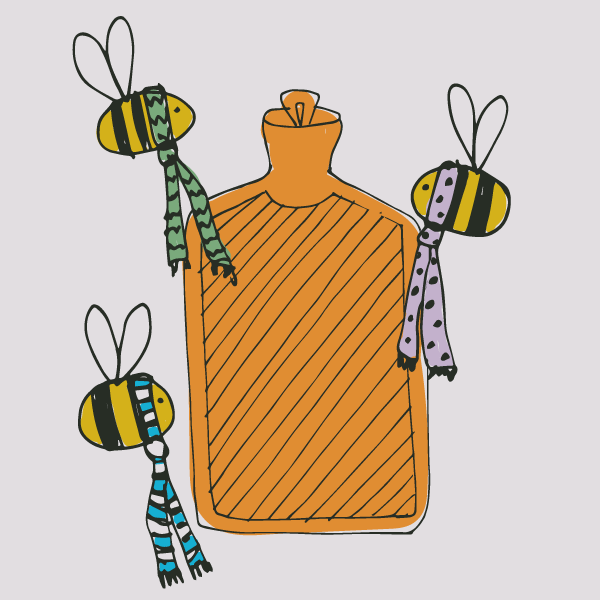 With hot water bottles! No not quite…
With hot water bottles! No not quite…
Honey bees are unusual in that they don’t hibernate like many other insects, e.g. only queen wasps hibernate over winter and then start a nest in the spring. They are still active – although you won’t see much happening at their hive entrance if it is too cold for them to fly. They will be huddled up together eating their winter stores – honey!
It’s the reason they worked so hard last summer collecting nectar from flowers to concentrate and process into honey which will store for long periods under their wax capped cells. This food store is their survival mechanism for winter and makes them unique amongst insects in having a group of active bees over winter.
Inside the hive, the cluster of bees forms a rough globe shape, heads pointing in keeping the inner cluster warm. Bees getting cold on the outside of this ‘globe cluster’ can go inward and swap with others, so there is a continual rotation.
Also, if the weather gets even colder the cluster can constrict, with the bees moving closer together to keep each other warm. As soon as the weather warms up again they can move further apart, expanding the cluster.
They can also feed on honey as energy for vibrating their wing muscles to create heat when necessary.
But, did you know that winter bees are actually fatter than summer bees?! Yes, they put on extra fat reserves in the autumn and produce a substance called vitellogenin that not only acts as long-term food storage but increases their life span significantly so that they can survive the long winter into spring before the queen lays lots more new young bees that can take over!
Of course, beekeepers can help them keep warm too! For example, just as it’s a good idea to conserve heat by insulating your loft, we put on 50mm of thermal board in our beehive roofs!
Although it’s not easy to see any activity right now, in the weeks of February and March, with the increase in daylight hours, the queen will be starting to lay eggs and the rest of the bees will be very busy looking after the hatched larva and pupa, keeping things warm at a constant 36 degrees C!
The bees are already preparing for summer!
By Jonathan Garratt

